Regardless of the type of liquidity, it depends on the specific market.
Author: Dora Lsk
Translated by: Shenchao TechFlow
Recently, more and more people have started discussing prediction markets.
Although they are becoming increasingly popular, there are also some drawbacks.
One of them is insufficient liquidity, which plays a crucial role in trading.
What is liquidity?
In simple terms:
In a high liquidity market, you can buy stocks with large amounts of money without causing significant price changes. For example:
High liquidity market: You can buy "YES" shares worth over $3,000 at a price of $0.77 per share, and the price hardly fluctuates.
Or you can place an order at $0.75, which may be quickly executed because there is enough liquidity and active traders in the market.
But in a low liquidity market, even small purchases can significantly affect the price.
For example, as I recently wrote about a market case:
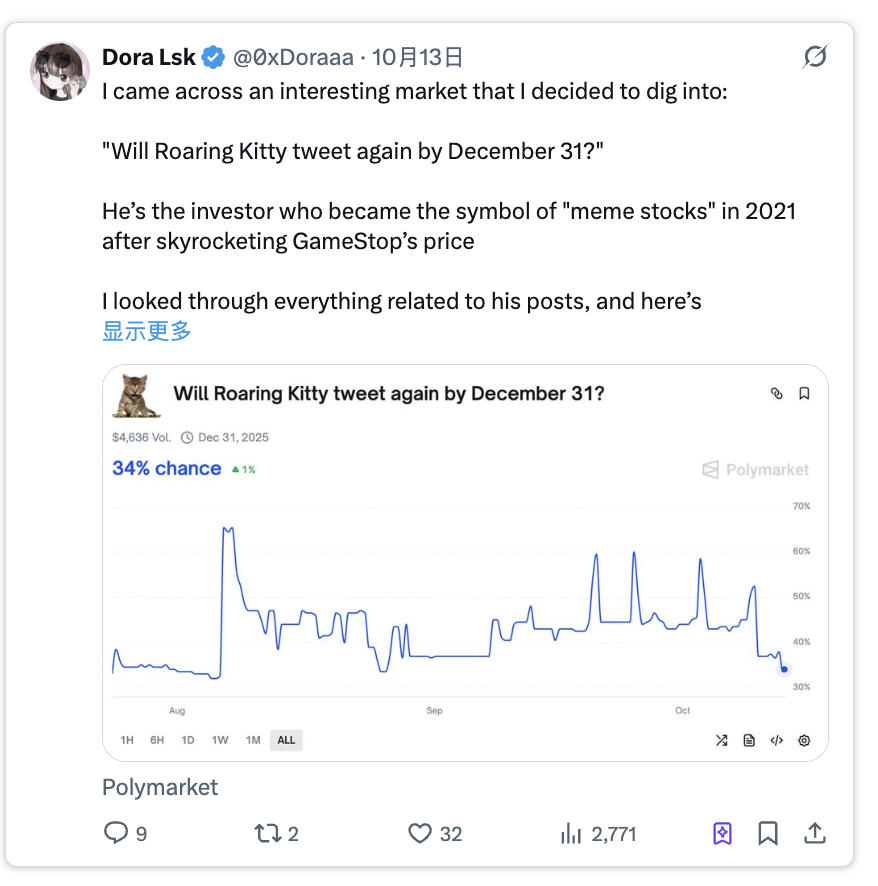
On Polymarket, when I wrote that article, the trading volume of the market was only $4,636, with a probability of 34%.
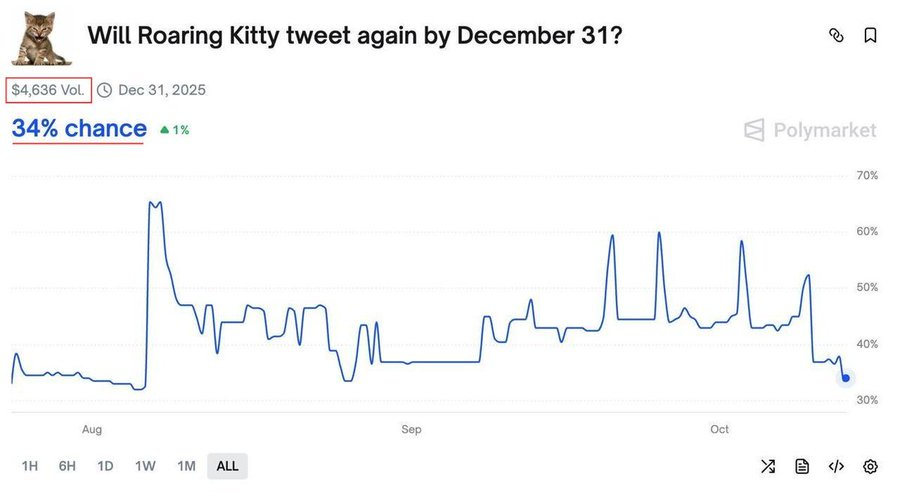
But later, the trading volume only increased by $500, yet it significantly affected the price, pushing the probability up to 55%.
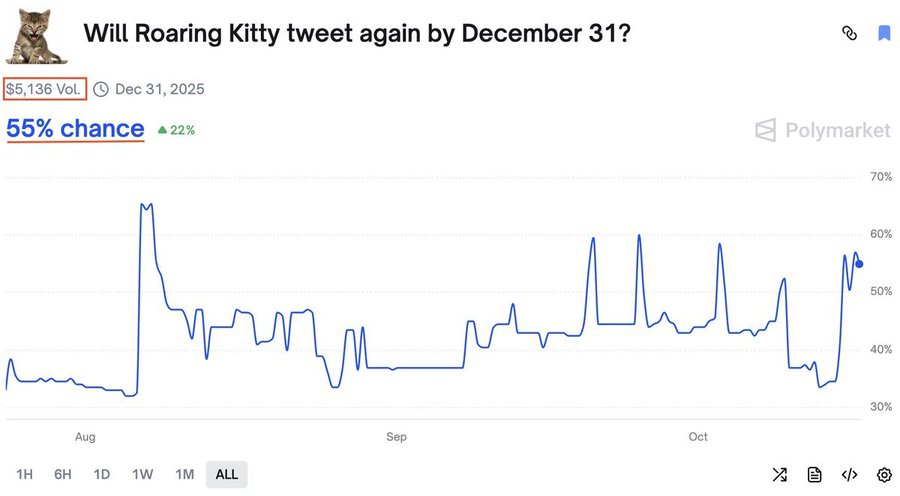
Therefore, in prediction markets, liquidity is an important indicator of how easily you can buy or sell positions without significantly changing the price.
Past liquidity: AMM model
Before 2022, Polymarket used an AMM (Automated Market Maker) model.
AMM is an algorithm that allows trading without traditional buyers or sellers.
It operates through a formula, allowing ordinary users to deposit funds into the market and earn fees from other people's trades.
However, when the market settles, one of the tokens becomes worthless, while liquidity providers still hold that token.
This often results in fee earnings not compensating for the losses.
As a result, most people providing liquidity through the AMM model ended up with losses.
For more details, see the following tweet:
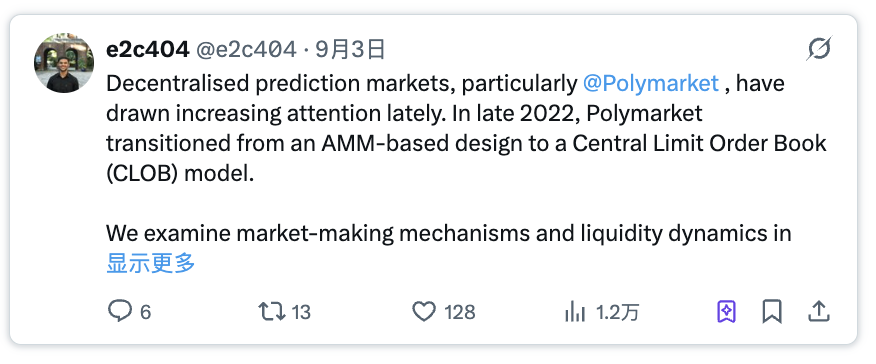
Original tweet link: Click here
Current liquidity: CLOB model
At the end of 2022, Polymarket switched to a CLOB (Central Limit Order Book) model.
CLOB is essentially the order book system we are familiar with:
Here, prices are set by traders themselves, rather than being automatically generated.
This model makes CLOB markets more profitable and allows market makers to profit from the bid-ask spread.
Polymarket also encourages users to provide liquidity through a reward mechanism.
Here’s how it works:
You place a limit order to buy or sell shares in a market that needs liquidity,
In the upper right corner, hover over "Rewards," and you can see:
Available rewards
Maximum spread (eligible orders will be highlighted in blue)
Minimum number of shares you need to buy or sell
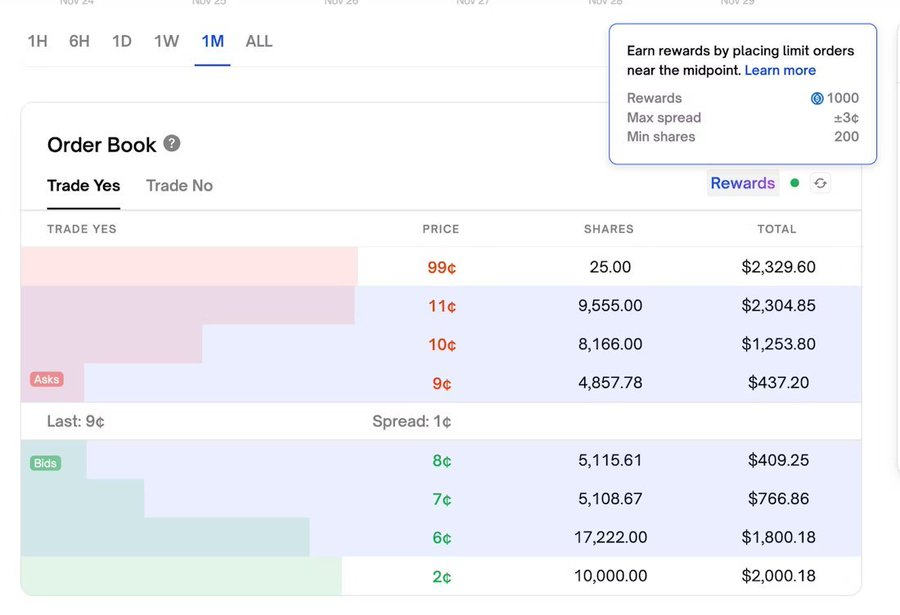
If your order receives a reward, you will see a blue highlighted clock icon.
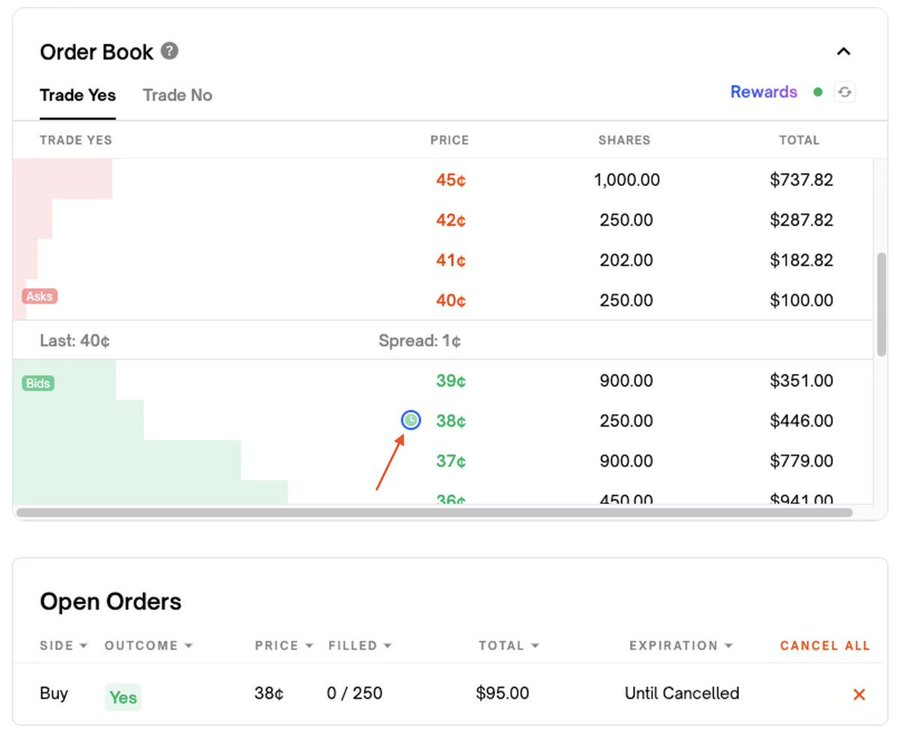
You can find all the information about earning liquidity rewards in the official documentation: Polymarket Liquidity Rewards Guide.
Where does liquidity initially come from?
After understanding what liquidity is and how it works, we have another question:
Where does liquidity initially come from?
When a market is first created, no one holds "YES" or "NO" shares, and no prices are set.
At this point, someone can place an order, for example:
- "I am willing to buy YES shares at $0.70."
If another trader places the opposite order, for example:
- "I am willing to buy NO shares at $0.30."
Once these orders match, the market forms its first price.
Subsequently, the price is determined by the average of what people are willing to buy (bid) and sell (ask):
Bid: The highest price someone is willing to pay for the shares.
Ask: The lowest price someone is willing to sell the shares.
Spread: The difference between the bid and ask prices.
If the spread is less than or equal to $0.10, the interface will display the midpoint price:
The formula is: Midpoint Price = (Bid + Ask) / 2
If the spread is greater than $0.10, the last transaction price will be displayed instead of the midpoint price.
Markets with the strongest and weakest liquidity
The category of markets with the strongest liquidity is political markets, partly because the first large-scale surge of prediction markets occurred during U.S. elections.
At that time, the liquidity and media attention in political markets reached record levels.
Meanwhile, some of the markets I encountered with the weakest liquidity are mention markets.
Of course, there will be exceptions in every category—liquidity depends on the specific market, regardless of its type.
免责声明:本文章仅代表作者个人观点,不代表本平台的立场和观点。本文章仅供信息分享,不构成对任何人的任何投资建议。用户与作者之间的任何争议,与本平台无关。如网页中刊载的文章或图片涉及侵权,请提供相关的权利证明和身份证明发送邮件到support@aicoin.com,本平台相关工作人员将会进行核查。




